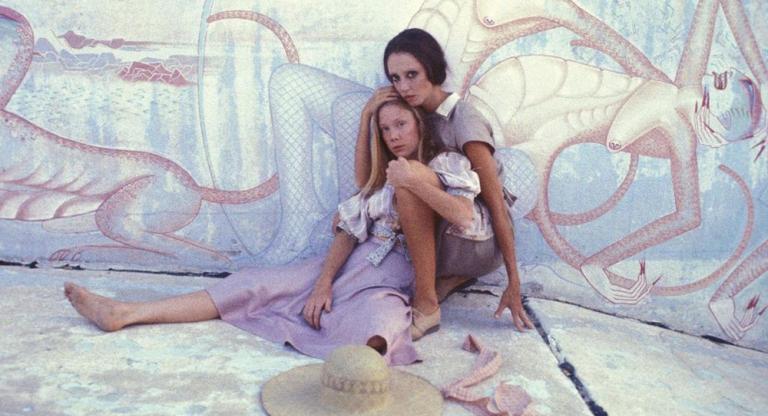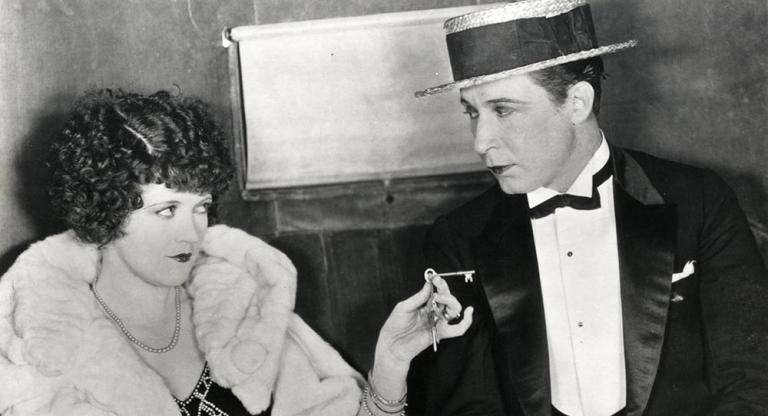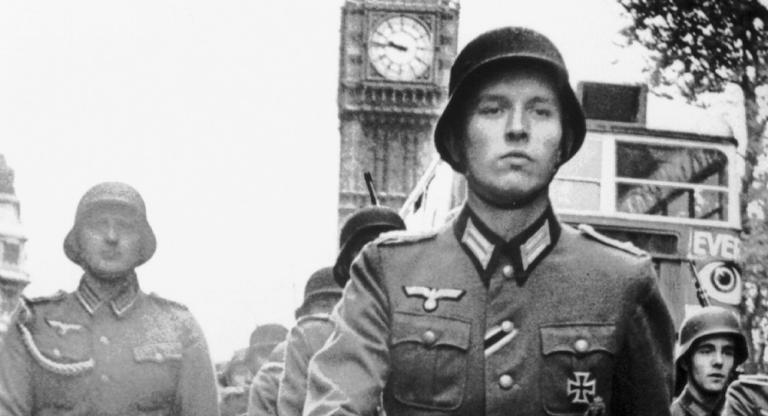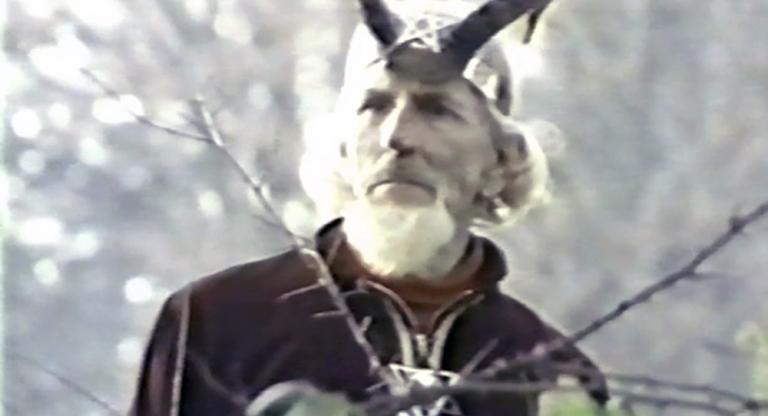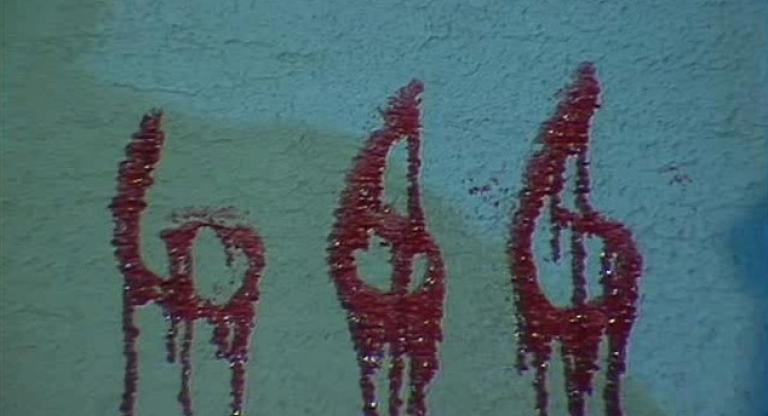Fraenkel Gallery, the esteemed San Francisco photography showroom, marks its 45th anniversary this month with a smallish film festival at the Roxie Theater. Each night, the gallery will present a double bill selected by a different Fraenkel photographer—Lee Friedlander, Robert Adams, and Sophie Calle among them—offering an eclectic mix of nouvelle vague and old Hollywood, alongside more contemporary fare. Closing night includes The Right Stuff (1983), chosen by landscape artist and California guy’s guy Richard Misrach, who’ll appear in conversation with director Philip Kaufman, and the opener is O Brother, where art thou? (2000), programmed by Jeffrey Fraenkel himself.
The Fraenkel Film Festival was conceived when Jeffrey, working with designer Rich Silverstein, noticed how many photographers now make moving-image work. He wrote to Christian Marclay—best known for his epic compilation film The Clock (2010)—and asked about influences. Marclay immediately mentioned Godard’s deconstructive Contempt (1963) and Antonioni’s Blow-Up (1966), which he called “a film about films.” Other responses came as a surprise. Carrie Mae Weems picked Bergman’s Wild Strawberries (1957), along with Barry Jenkins’s Moonlight (2016). And Nan Goldin chose wartime epics Paths of Glory and The Cranes are Flying (both from 1957).
Photo and film have a complicated relationship. In the past, photographers were assumed to freeze time, capturing the Cartier-Bressanian “decisive moment,” while filmmakers worked in movement and duration. Now those distinctions are harder to make—not that Jeffrey was ever a purist. Many of the artists in his stable, from Marclay to Goldin to Martine Gutierrez to the illustrator and video artist Kota Ezawa, regularly work across genre and media. “I see all art-making as a big rich delicious soup,” Jeffrey told me, emphasizing the importance of sharing and public experience. Most of the films will screen in the Roxie’s large theater, presented by master projectionist Carl Martin in vivid 35mm.
The festival coincides with a summer show at Fraenkel’s downtown headquarters—an droll and often morbid exhibition called Fraenkenstein, curated by Jeffrey in collaboration with Jordan Stein, founder of the beloved Cushion Works gallery in the Mission. Fraenkel and Stein share a screwball sensibility—the exhibition’s title is a portmanteau of the curators’ yiddish surnames, and the banner image is John Waters’s surreal Reconstructed Lassie (2012), a photo-illustration of the famous show-collie’s first public appearance after undergoing cosmetic surgery. Lassie’s rhinoplastic glow-up—eyebrows arched, jowls bloated with collagen—is a comment on the grotesquery of public aging and especially, Jeffrey says, “the challenges of getting work for an older actress.” At the center of the exhibit is George Kuchar’s low-budget Frankenstein trilogy, made in the 2000s on the campus of the San Francisco Art Institute and installed at Fraenkel on a video monitor. Kuchar’s Kiss of Frankenstein (2003) actually stars Jordan as the owner of a 2nd Ave hofbräu who travels to ancestral Hungary and meets the Doctor’s lusty bride, played by the underground film star Linda Martinez. She seduces him—an inevitability Jordan described as “exciting and unbelievably weird.”
The same can be said of the novel: Mary Shelley’s 1818 gothic metafiction is indeed weird, campy, and extravagantly written (“Abhorred monster! fiend that thou art!,” Frankenstein seethes on page 2). But it’s also a treatise on deluded modern manhood and the agonies of creaturely life–the heart of the book’s extra-human explorations, and the most disturbing, certainly the most photogenic, topic in the Fraenkel exhibit. Bodies and cyborgs are everywhere on display, from Katy Grannan’s photo of a smoldering shirtless drifter, bandaged and wearing a blue neck-brace, to Friedlander’s terrifying self-portrait, taken on a gurney at the Cleveland Clinic, to Guittierez’s Plastics, Brigitte (2020), close-up of a woman’s face—she looks like Jane Mansfield—disfigured beneath a veil of saran wrap: lipstick smeared, contact lenses pushed from her pupils.
What’s most Frankensteinian about the Fraenkel show is, to mine eyes, a zeal for experimentation and mix. The exhibit is full of photo, of course, but also video, sculpture, watercolor (Brett Goodroad’s luxuriant The Club, 2015), collage, and appropriated imagery. Many of the artworks stitch together existing images in new and strange confabulations. There’s black-and-white photos of bloody horror on the movie screen: Bruce Conner’s photos of bloodshot eyeballs from a midnight movie broadcast on a motel TV in Venice Beach, and Diane Arbus’s tender, freaky Frankenstein’s Daughter (1958), photographed in a darkened theater during the eponymous film’s first run. Arbus’s gruesome picture, like so much of her oeuvre, evokes the cheap thrill of seeing—witnessing—abjection and ugliness. Yet the show’s medial mishmash can also be quite beautiful. One of the most captivating works in the exhibition is Peter Hujar’s portrait of the gorgeous Paul Thek at work in a Manhattan loft, creating his famous wax dummy (Thek called it “Dead Hippie”) from his installation The Tomb (1967).
The jumble of forms and styles—embodied, erotic, cerebral, profane—is an apt anniversary celebration, but is also something of a warning, as we enter an era of runaway AI commands, apocalyptic climate disasters, and bizarre diseases like Covid-19 and Monkeypox. Fraenkel’s future—photography’s future—will be as strange and adventurous as its origins.
“Fraenkel Film Festival” runs July 9-20 at the Roxie. “Fraenkenstein” is on view through August 10 at Fraenkel Gallery.
![Diane Arbus, “Frankenstein’s Daughter” [close up with shoulders] 1958 Diane Arbus, “Frankenstein’s Daughter” [close up with shoulders] 1958](/sites/default/files/2024-07/FG%2001_Fraenkenstein_Arbus_%E2%80%9CFrankenstein%27s%20Daughter%E2%80%9D%20%5Bclose%20up%20with%20shoulders%5D%201958.jpg)
